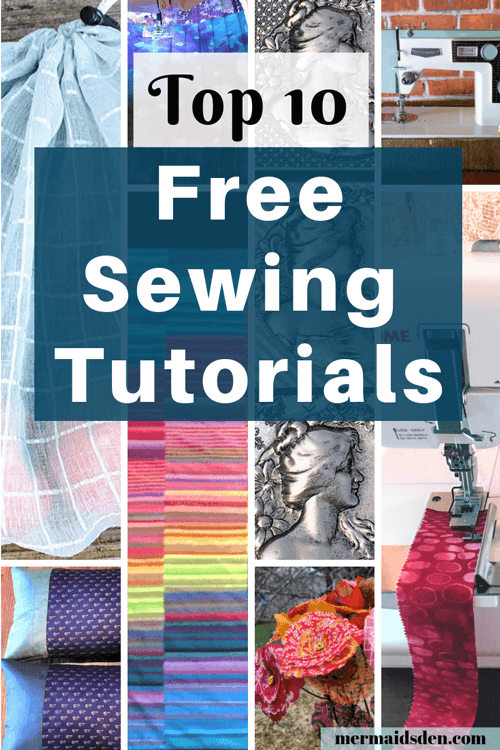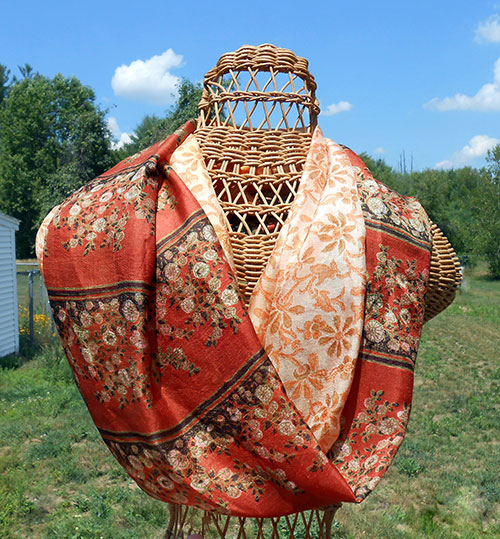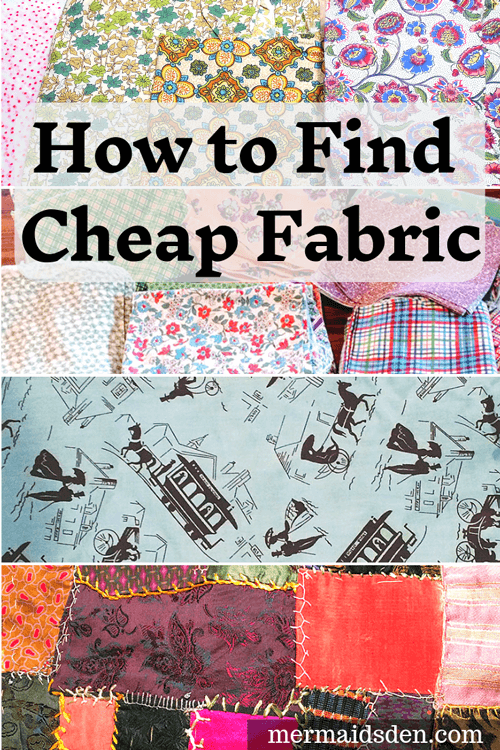Top 10 Sewing Tutorials and Projects of 2018

Last year, I did a post reviewing my top posts from 2017, so I thought I’d continue that tradition for 2018. Sometimes I know that a post is going to do well, and sometimes I’m surprised by how well something is received. Every time I think I have it figured out, my readers surprise me!
My posts on sewing machines always seem to do well, so I’ll work on more of those in the upcoming year. I also had a couple of projects that I posted toward the end of the year that look like they’re going to do well, but they haven’t had enough time to catch up to the posts from the beginning of the year. Reusable and environmentally-friendly sewing projects seem to strike a chord, so I’ll work on doing some more of those as well. If you have any comments or suggestions for posts you’d like to see in 2019, just let me know in the comments!
Top 10 Posts from 2018
In this post, I’ll show you how to make your own reusable handmade produce bags or vegetable storage bags. These are an easy and quick DIY project that even a beginner can make. This will help you reduce your use of disposable plastic bags at the grocery store and adopt a zero waste lifestyle. I adapted this pattern from the drawstring lingerie bags I recently made to help wash delicate items in the laundry. These produce bags are also washable, in case you ever need to clean them.
In this post, I’ll cover some of the best vintage sewing machines out there. I’ve written a few overview posts on vintage sewing machines, but not one that specifically deals with the best vintage sewing machine because, honestly, I'm not sure there's one best machine to get. Still, it's something that people keep asking about, so I thought I'd take a stab at it.
However, I definitely have some preferences and recommendations, especially for different categories of machines, such as straight stitch, zigzag, treadle, industrial, toy, and sewing leather. I'm also going to go over other bloggers' recommendations, so you'll get a well-rounded idea of what people look for in a vintage sewing machine.
In this post, I'll show you how to make an easy envelope pillow sham out of silk sari pieces (or scarves). I post projects on Hometalk, and they have weekly challenges and trendy topics for bloggers. This week, the topic is West Elm knock-offs. I was scrolling through Pinterest to find ideas, and I came across some stunning silk sari pillows that inspired this project. This post contains an easy beginner sewing pattern and tutorial for these pillow cases.
In this post, I'll show you how to make some cute and sparkly Art Nouveau themed sewing kits out of old Altoids tins, paper, washi tape, felt, and metal stampings. You can use these to store small sewing and embroidery projects or just as trinket boxes. I've included a free pdf pattern in the body of the post with templates for the top, bottom, and inside of the Altoids tin.
In this post, I'll show you how to easily make your own silk flowers using pretty fabric and an existing bunch of fake flowers. This is a quick, no sew project that will help you use up some fabric scraps and make a beautiful and unique centerpiece. I used a die cutter to cut out my flower pieces, but you can also use free templates online to cut out your flowers. Let's make some pretty flowers!
In this post, I'll show you how to use a coverstitch machine, specifically the Janome 1000CPX. I'll also go over the differences between the 1000CPX, 900CPX, and 2000CPX. You'll be up and running with your coverstitch machine in no time!
In this post, I'll show you how to make a beautiful rainbow throw with the quilt-as-you-go method. This method helps you to sew all of the layers of your quilt at the same time, which means it comes together pretty quickly! Then we'll add a cozy fleece border around the edge to round it all out. This project is a slightly more complex version of the quilt as you go lap blanket I made.
In this post, I'll go over my best tips and tricks for sewing in a straight line. When you first start sewing, you might notice that it's difficult to make sure your fabric feeds evenly, so that you can get a nice straight line of stitches. Even if you've been sewing for awhile, you might have trouble with this! Honestly, when I stop paying attention or sew too quickly, I still get wobbly seams sometimes. But if you follow these tips, and you pay careful attention, you should be able to sew in a nice straight line.
Do you have a sewing machine with questionable electrical cords? In this post, I'll show you how to replace an external motor on a vintage sewing machine with a new motor and foot pedal, so you can get it running again and use it without worrying about electrical fires.
In this post, I'll review the Singer Tiny Serger, a little gem of a machine that I only discovered recently. I have a full size serger, the Singer ProFinish, which I reviewed here. I went without a serger for awhile just because they're pricey, but if I'd known about the Tiny Serger, I'd have bought one immediately. I love this little guy.
Want More Sewing Projects?
See my Pinterest board The Mermaid’s Den for more of my best projects:
See also these 45 free printable sewing patterns from All Free Sewing!


















